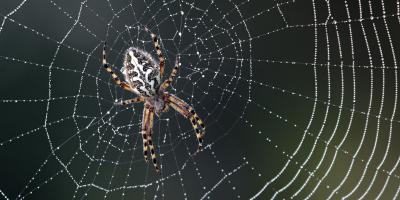Do Some Plants Attract More Pests than Others?

Now that spring has finally sprung, green thumbs across New England can hardly wait to get their luscious gardens underway. But before you break ground and start plotting your rows, you may want to consider how the plants you choose for your garden will affect the pests you have to deal with from now until fall.
Ask any seasoned gardener and they’ll tell you, some plants attract beneficial species of insects, and some attract unwanted pests. Some flowers and vegetables even repel certain pests, adding an extra layer of protection to your property.
The right combination of plants can save you time, effort and maybe even some money when it comes to controlling your garden pests this year. But which plants make up this magic combination?
Be Particular with Your Plant Selection
If you’re new to home gardening, you may not know this, but not all insects are bad for your plants. In fact, you’ll want to do your best to attract some of these species to your garden.
Invite These Insects to Your Garden Party
Asian lady beetles, for example, can be great for your garden. Don’t let their cheerful color and polka dots fool you – often mistaken for ladybugs, Asian lady beetles are vociferous carnivores, devouring great numbers of aphids and other plant-eating pests.
The aptly-named pirate bug is another big pest predator, feasting on aphids, spider mites, thrips, whiteflies and caterpillars – none of which you want to see munching on your garden greens. Assassin bugs, hoverflies, lacewings and parasitic mini-wasps are all beneficial species that can also help keep garden-invading pests to a minimum.
While these insects should prove a welcome sight if spotted on the shoots and stems of your plants, there are some you should recognize and repel with certain plants.
Plant Protection Against these Insects
Establishing an effective garden pest defense is like any good investment – you’ll want to diversify. Adding pest-repelling plants either to your main garden or throughout your yard creates another layer of deterrence to help keep your garden healthy and beautiful.
Be sure to include basil, lavender, rosemary and mint in any spice gardens – those plants ward off mosquitos, flies and biting insects. Petunias, marigolds, chrysanthemums and even catnip can cut down on beetles, aphids, cockroaches and ticks. In fact, chrysanthemums are a natural source of one of the world’s safest, most popular and most effective classes of pesticide – pyrethrins.
Professional Planting and Landscaping Tips
How you arrange and maintain your garden can have a huge impact on pest control. Be sure to give your plants adequate room to grow and breathe – good air circulation will make the space around your plants less appealing to pests. Also, water deeply in the morning so the water is able to soak the soil at least eight inches below the surface.
Proper maintenance doesn’t end at the garden wall – making sure your entire yard is tidy by keeping the lawn short and the hedges trimmed will go a long way to reducing pests, not just in your garden, but throughout your whole property.
Finally, if you find yourself battling a more intense pest problem than these measures can control, don’t hesitate to use good old-fashioned physical barriers to keep insects and other destructive creatures away. Row covers, hot caps and plant cages may not be the most attractive things to look at, but if your property is surrounded by woods, wetlands or other pest-intensive zones, they may be necessary to give your garden a good start.
Need some extra help keeping your property pest-free, inside and out? Check out our Home Protection Plan.



